Introduction
Crocheting is more than just looping yarn—it’s an art form, a stress reliever, and a way to transform humble strands of fiber into beautiful, functional creations. If you’ve ever wondered what to crochet as a beginner, you’re not alone. That first project can feel daunting: which stitches should you learn first? How do you read a pattern? What tools do you really need? The good news is that you can dive into your first crochet adventure with confidence and come away with something you’ll actually use or wear. This guide will walk you through why certain projects make great entry points, showcase 15 no-fail beginner-friendly patterns, and point you toward tutorials—like our chain stitch tutorial and double crochet tutorial—to get you stitching in no time.
By the end, you’ll not only know what to crochet as a beginner but also how to choose materials, avoid common pitfalls, and build your confidence stitch by stitch.
Table of Contents:
What Makes a Good Beginner Crochet Project?
5 Beginner Crochet Projects You’ll Actually Finish
Must-Have Crochet Tools for Beginners
Your First Crochet Project Is Just the Beginning
What Makes a Good Beginner Crochet Project?
Before diving into specific patterns, let’s break down the attributes of a truly beginner-friendly project. Choosing the right first few makes all the difference in staying motivated and avoiding frustration.
- Simple Stitch Patterns
- Chains, single crochet, and double crochet are the building blocks of countless projects. Mastering these three staples (see our chain stitch tutorial and double crochet tutorial) grants you the skills to tackle most “easy” patterns.
- Chains, single crochet, and double crochet are the building blocks of countless projects. Mastering these three staples (see our chain stitch tutorial and double crochet tutorial) grants you the skills to tackle most “easy” patterns.
- Minimal Shaping or Counting
- Rings, rectangles, and straight edges mean less math. For instance, a simple rectangle scarf or dishcloth involves repeating the same row until your project reaches the desired length—no increases, decreases, or tricky shaping required.
- Rings, rectangles, and straight edges mean less math. For instance, a simple rectangle scarf or dishcloth involves repeating the same row until your project reaches the desired length—no increases, decreases, or tricky shaping required.
- Quick Wins for Confidence
- Bite-sized projects (dishcloths, coasters) can often be completed in an evening. That sense of accomplishment is a powerful motivator when you’re learning what to crochet as a beginner.
- Bite-sized projects (dishcloths, coasters) can often be completed in an evening. That sense of accomplishment is a powerful motivator when you’re learning what to crochet as a beginner.
- Medium-Weight Yarn & Hook Size
- Worsted-weight (#4) yarn paired with a 5.0–5.5 mm (H–I) hook strikes the perfect balance between ease of handling and stitch definition. Avoid super bulky or lace-weight yarns at first—they can be too tight or too fiddly.
- Worsted-weight (#4) yarn paired with a 5.0–5.5 mm (H–I) hook strikes the perfect balance between ease of handling and stitch definition. Avoid super bulky or lace-weight yarns at first—they can be too tight or too fiddly.
Pro tip: Light-colored, smooth yarn helps you see your stitches more clearly so you can spot and fix mistakes as you go.
15 Beginner Crochet Projects You’ll Actually Finish
Ready to put those basic stitches to work? Here are 15 projects that are perfect for answering the eternal question of what to crochet as a beginner. Each one introduces a new concept—flat work, working in the round, seaming, or color changes—without overwhelming you.
1. Crochet Dishcloths
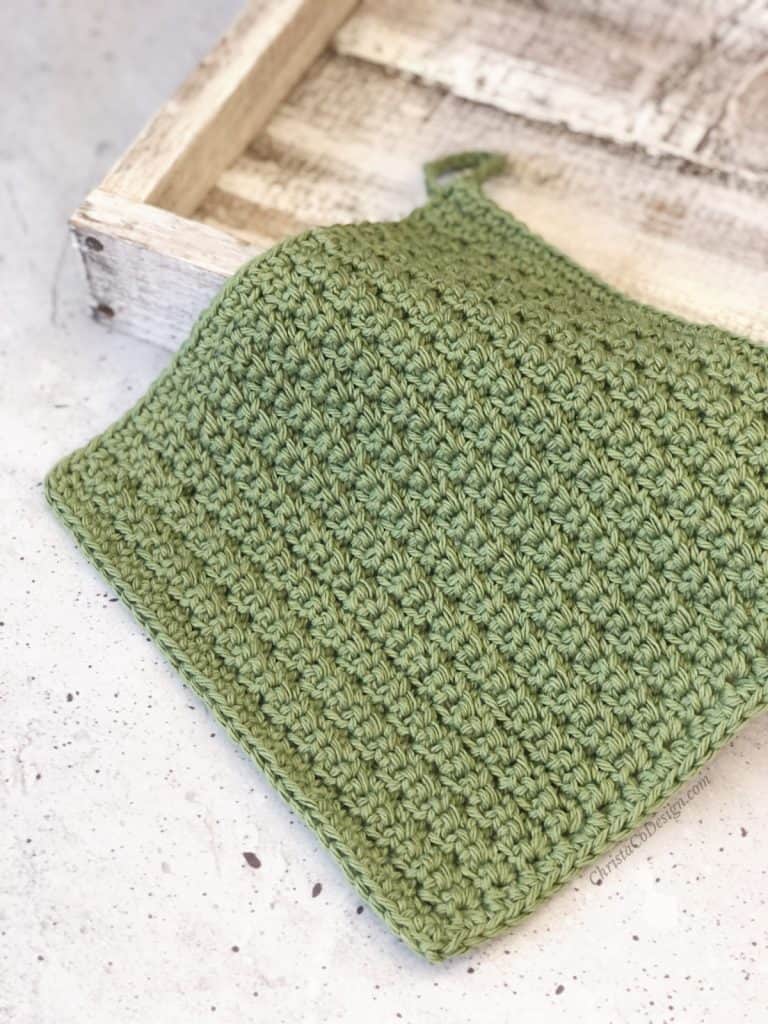
Why it’s great: A perfect introduction to flat rectangles and basic stitches, dishcloths are quick, functional, and machine-washable.
Skills practiced: Chain foundation, single crochet rows, turning chains, maintaining even tension.
How to start: Chain about 30 stitches, then SC in each chain across. Chain 1, turn, and repeat for 20–30 rows. Fasten off and weave in ends.
2. Granny Squares

Why it’s great: The iconic granny square teaches you working in rounds and simple clusters. Plus, once you’ve made several, you can join them into larger projects.
Skills practiced: Magic ring (or chain loop), double crochet clusters, slip stitches, color changes.
Learn more: Follow the step-by-step Granny Square Tutorial.
3. Headbands & Ear Warmers

Why it’s great: These narrow bands introduce stretchy fabrics and seaming without shaping for a head or bust—ideal for practice.
Skills practiced: Foundation chain, double crochet, slip stitch seams, turning chains.
Pattern idea: Chain 70–80 stitches (depending on desired width), DC back and forth for 6–8 rows, seam ends together.
4. Simple Scarves
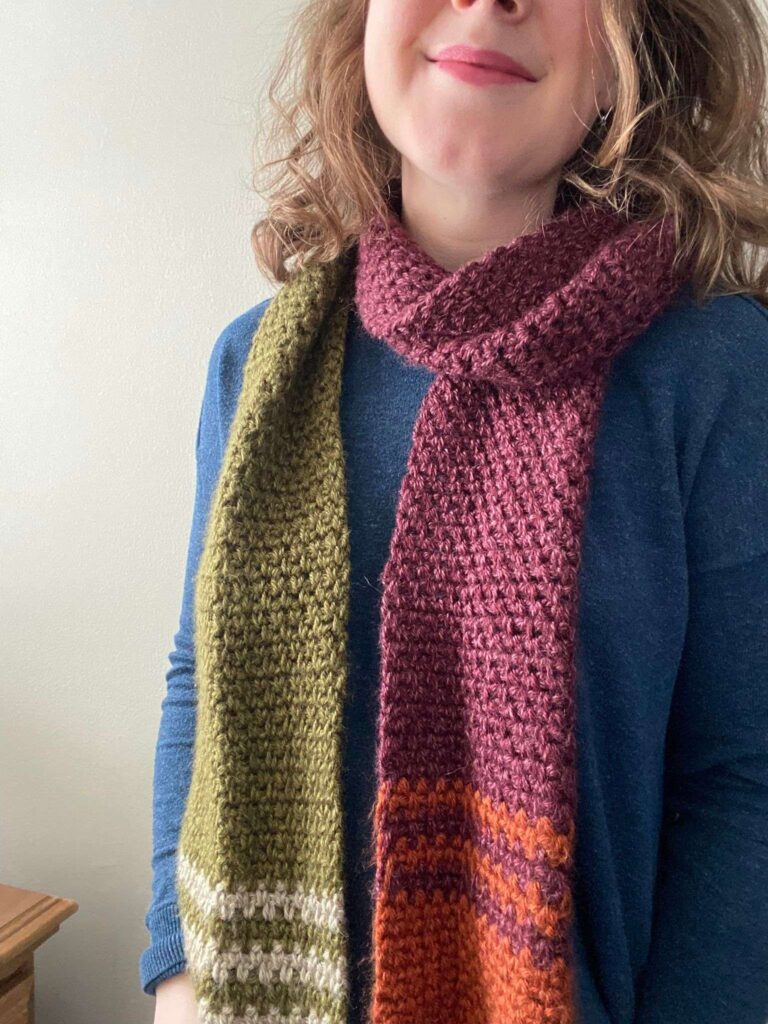
Why it’s great: A longer rectangle project reinforces consistency and lets you experiment with stitch repeats (e.g., alternate SC and DC rows for texture).
Skills practiced: Stitch variation, reading pattern repeats, edging.
Pattern idea: Chain 25 stitches, DC in third chain from hook and across, chain 2, turn, and repeat for 60–70 rows.
5. Coasters

Why it’s great: These mini circles or squares use the same principles as larger items but in a fraction of the time. Perfect for practicing tension and circular increases.
Skills practiced: Magic ring or chain loop, round increases, slip stitch join.
Pattern idea: 6 SC in magic ring, SL ST to join, chain 1, 2 SC in each stitch around, fasten off.
6. Cup Cozy
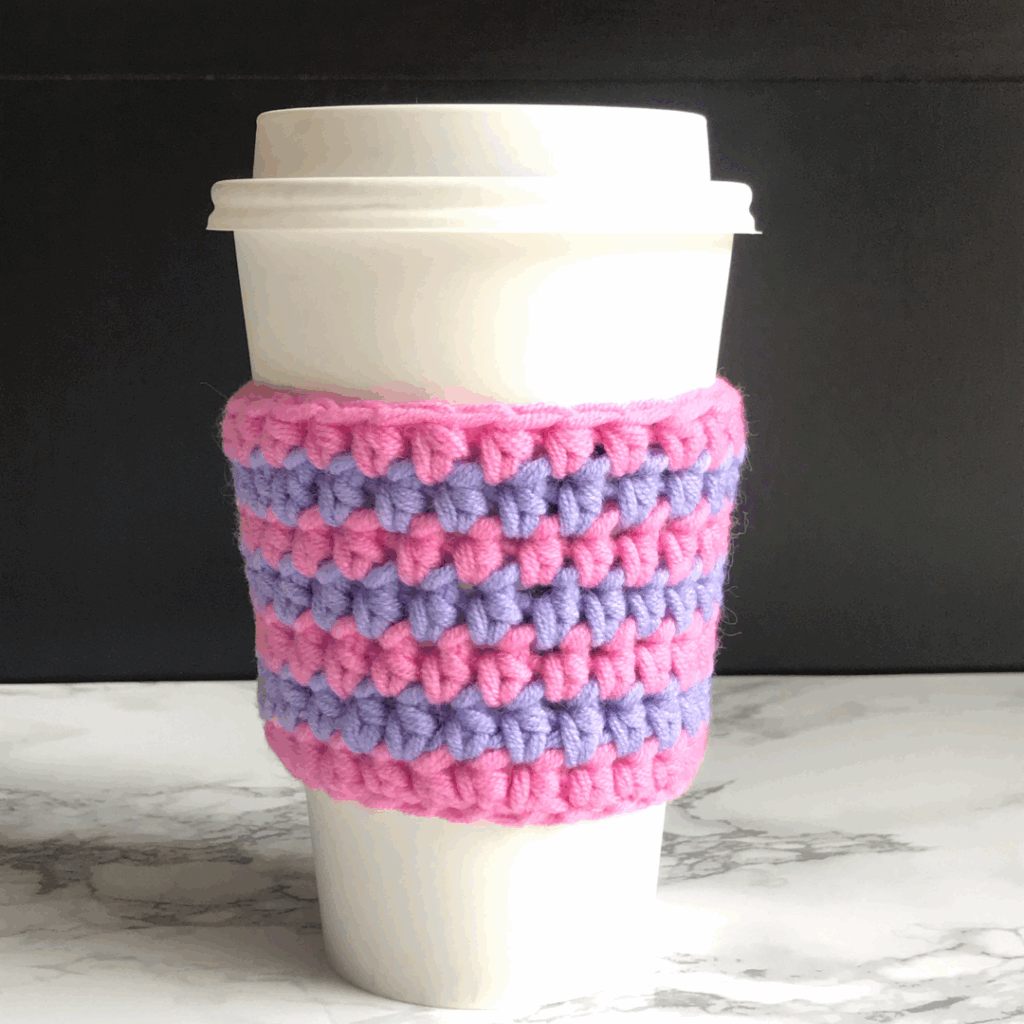
Why it’s great: Combines flat knitting with a bit of seaming; a cute gift or personal accessory that’s practical and fast.
Skills practiced: Foundation chain, single or half-double crochet rows, single crochet seam.
Pattern idea: Chain 40, HDC in each chain for 10 rows, fold and SC seam.
7. Basic Beanies (Rectangular Method)

Why it’s great: This “poor man’s beanie” avoids hat shaping by creating a rectangle that’s folded and seamed. Great for learning construction.
Skills practiced: Long strip work, blocking for shape, seaming edges.
Pattern idea: Chain 60, DC for 40 rows, fold in half and seam one side; cinch top with running stitch.
8. Simple Tote or Market Bag
Why it’s great: Opens up bag-making with sturdy stitches and handles—fantastic for practicing gauge and size adjustments.
Skills practiced: Extended stitches (e.g., DC in front/back post), handle creation, joining.
Pattern idea: Chain 30, DC for 40 rows for bag body; chain 60 for handles and attach.
9. Bookmarks
Why it’s great: Thin and flat, bookmarks let you test yarn textures and small details like picots or tassels. Instant gratification in under an hour.
Skills practiced: Chains, SC rows, decorative edges.
Pattern idea: Chain 20, SC for 5 rows, add a picot border or tassel for flair.
10. Crochet Flowers
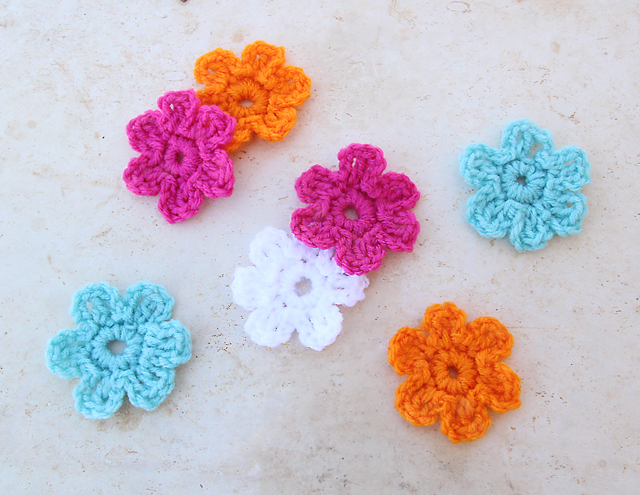
Why it’s great: Practice shaping and layering petals—minimal yarn required and no seaming needed. Excellent motif for embellishing other projects.
Skills practiced: Working in rounds, slip stitch joins, chain loops.
Pattern idea: Chain 5, join to form ring, SC, chain 3, SC in same stitch for 5 petals.
11. Bunting or Garland
Why it’s great: Modular triangle or square motifs work up quickly and can be customized for seasons or celebrations.
Skills practiced: Triangular shaping (decreases) or square granny clusters, joining motifs on a chain.
Pattern idea: Make 10 triangles: chain 2, DC 2 in second chain, chain 2, turn, DC in each stitch (increase one stitch per row), attach to chain.
12. Beginner Amigurumi Ball
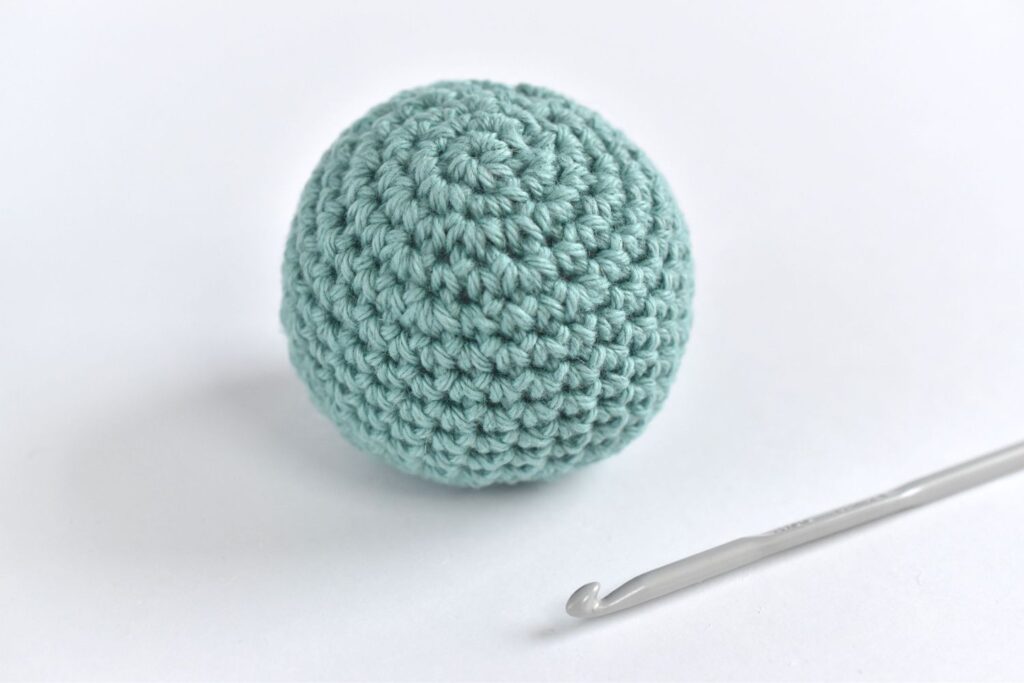
Why it’s great: Your first venture into amigurumi! A simple sphere introduces single crochet in the round and invisible decreases.
Skills practiced: Magic ring, SC, invisible decreases, stuffing, slip stitch closure.
Pattern idea: 6 SC in magic ring; 2 SC each around; (SC, inc) around; work even for several rounds; (SC, dec) around; finish.
13. Wrist Warmers (Rectangle Method)
Why it’s great: Another folded-and-seamed rectangle—this time with thumb opening. Cozy, practical, and quick.
Skills practiced: Blocking for gauge, seaming, creating thumb hole.
Pattern idea: Chain 25, DC for 25 rows, seam most of the edge leaving space for thumb.
14. Simple Pillow Cover
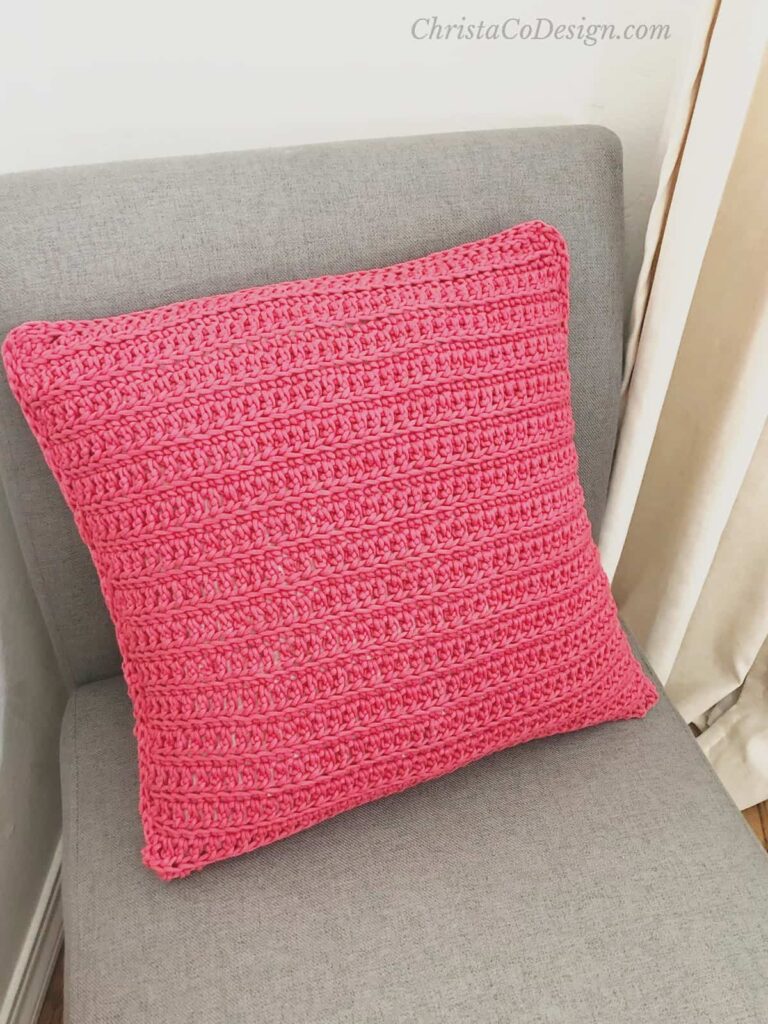
Why it’s great: Home décor that doubles your granny square skills—create two squares or rectangles, join edges, and insert a pillow form.
Skills practiced: Granny squares or rectangles, joining techniques (seam vs. slip-stitch join).
Pattern idea: Work two 20×20 granny squares, slip-stitch or SC join three sides, insert pillow, seam remaining side.
15. Sampler Blanket Squares
Why it’s great: A longer-term project composed of many mini-projects—each square explores a different stitch (shell, cluster, filet).
Skills practiced: Variety of stitches, color changes, joining methods (seam vs. join-as-you-go).
Inspiration: Check out these Granny Square Projects for creative layouts.
By selecting a variety of projects, you’ll learn what to crochet as a beginner and build a toolkit of skills—from flat work to shaping in the round.
Tips for Beginner Crocheters
Embarking on your first crochet journey can be as much about mindset as it is about technique. Here are five tips to keep you motivated and on track:
- Choose Light-Colored Yarn
Dark or variegated yarns can hide mistakes. Opt for solids in light shades so you can see each loop and stitch clearly. - Maintain Loose Tension
Beginners often grip their hook too tightly. Try to keep your working hand relaxed—your stitches will look more even and you’ll crochet faster. - Use Stitch Markers Religiously
Mark the first stitch of a round or key points in your pattern so you never lose your place. Learn all about them in our How to Use Stitch Markers guide. - Weave in Ends as You Go
Rather than letting dozens of tails pile up, weave ends in every few rows. This habit makes finishing neater and less daunting. - Embrace Mistakes
Frogging (ripping out stitches) is part of the process—every crocheter has been there! Learning what to crochet as a beginner includes mastering how to fix and learn from errors.
Must-Have Crochet Tools for Beginners
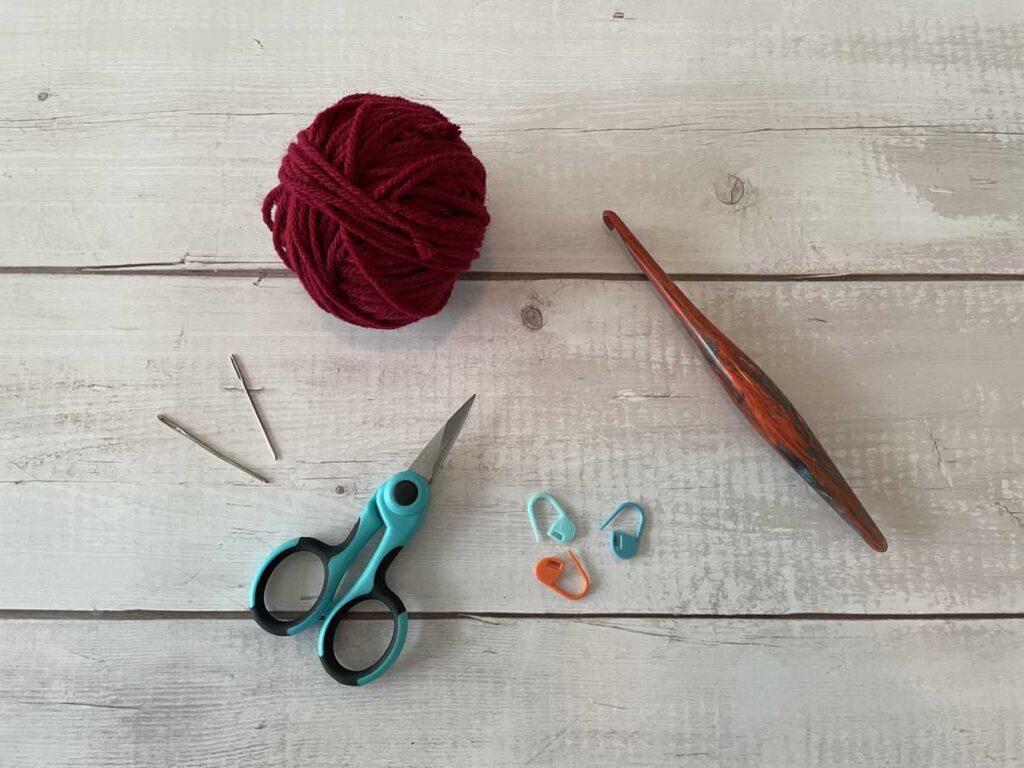
Before casting on your first chain, gather these essentials to ensure your crochet sessions are frustration-free:
| Tool | Purpose |
| Worsted-weight (#4) Yarn | Versatile, easy to see, and works up quickly. |
| 5.0 mm (H) or 5.5 mm (I) Hook | Ideal balance of size and control for beginners. |
| Stitch Markers | Mark rounds or pattern repeats—game changers! |
| Tapestry Needle | Weaving in ends and seaming pieces. |
| Scissors | A sharp pair dedicated to yarn cutting. |
| Project Bag or Pouch | Keeps yarn, hook, and notions organized on the go. |
Having the right tools means you can focus on learning stitches instead of hunting for supplies.
FAQs About Starting Crochet
Q1: How do I know if a pattern is truly beginner-friendly?
Look for patterns labeled “easy,” “beginner,” or “TV-friendly.” Check that they use only basic stitches (chain, SC, DC) and avoid complex shaping.
Q2: What’s the ideal yarn for a first-time project?
A medium-weight acrylic or cotton worsted yarn in a light, solid color is best. It’s inexpensive, easy to wash, and you can see stitches clearly.
Q3: How long will my first project take?
Simple makes like dishcloths or coasters often take just 1–2 hours. Scarves or headbands might span a few evenings. For a sampler blanket or multiple granny squares, expect several weeks—perfect for learning gradually.
Q4: Do I need to learn crochet abbreviations?
Yes—common abbreviations include ch (chain), sc (single crochet), dc (double crochet), sl st (slip stitch), and st(s) (stitch/es). Most patterns include a legend.
Q5: Can I really learn everything online?
Absolutely! Free video tutorials, step-by-step photo guides, and supportive crochet communities make online learning accessible. Start with our foundational posts: Chain Crochet Tutorial, Double Crochet Tutorial, and How to Use Stitch Markers.
Your First Crochet Project Is Just the Beginning
Choosing what to crochet as a beginner sets the tone for your crochet journey. By starting with simple, satisfying projects—like dishcloths, granny squares, or headbands—you’ll build the foundational stitches and confidence you need to tackle more advanced patterns. Remember: every expert was once a beginner who kept practicing, learning from mistakes, and celebrating each finished piece.
Whether you’re making cozy coasters to decorate your home or discovering the joy of a colorful sampler blanket, the most important stitch is the next one you make. Don’t be afraid to experiment, frogging counts as learning, and you’ve got a whole community cheering you on.
Ready to start? Grab your yarn, dust off that hook, and pick one of these 15 beginner projects. In no time, you’ll look back and marvel at how far you’ve come. And when you’re ready for more, explore our full range of tutorials and project ideas:
- Chain Crochet Tutorial: https://bugaliciouscrochet.com/double-crochet-tutorial-a-beginner-essential/
- Double Crochet Tutorial: https://bugaliciouscrochet.com/double-crochet-tutorial-a-beginner-essential/
- How to Use Stitch Markers: https://bugaliciouscrochet.com/how-to-use-stitch-markers/
- Granny Square Tutorial: https://bugaliciouscrochet.com/granny-square-tutorial/
- Granny Square Projects: https://bugaliciouscrochet.com/granny-square-projects-creative-ideas-for-every-level-of-crocheter/
Your next favorite crochet project awaits—so what are you waiting for? Let’s get stitching!